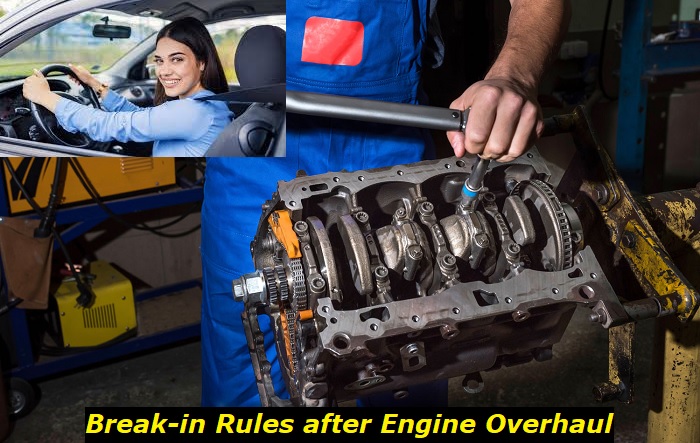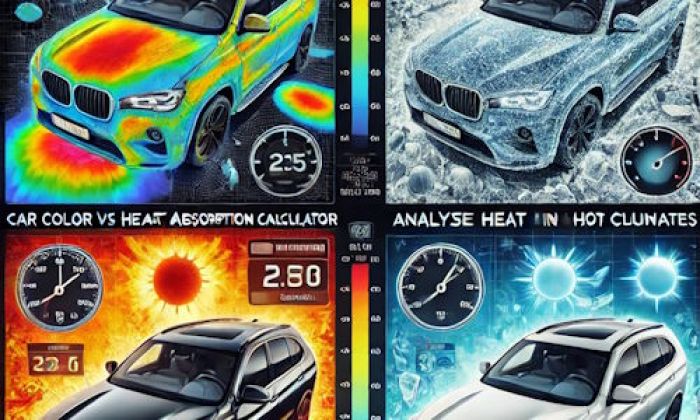In short, after overhauling the engine, you should carefully notice all changes in its work, drive very carefully for at least 500 miles, and change the oil with the filter after that period. You mustn't ignore any problems like strange sounds or poor acceleration.
Engine use tips highlights
- Level of importance:important
- When done:driving the vehicle, maintaining the engine
- Cost of mistake:$250 - $350
- How to avoid:read advice, read driver's manual
- Consequences:bad efficiency, shorter engine lifespan, engine problems
- DIY solutions:possible

What to do right after the overhaul is completed?
The actual advice, in this case, will depend much on what was replaced in your engine. There are various types of overhauls. For example, the block may have been OK but the head was broken, so the mechanics only overhauled the head. Or your engine was completely dead and needed the replacement of pistons, crankshaft, valves, preparation of the cylinder block, etc.
The most common type of overhaul is changing valve seals, and piston rings, checking and adjusting valves, checking the condition of the block, and checking the rod bearings and crankshaft. In this case, the engine is more or less ready for work right after you take the car from the shop. But if some more serious work was done, you need to follow several important steps.
Here they are:
- right after the engine is ready, you should fill it with the new oil - it's the most important step because without oil it will be broken once started;
- the new oil filter is also needed - it will help you eliminate all metal pieces that could end up getting inside the engine when it was repaired;
- also, you should fill up the coolant and check its level several times after the engine is started;
- after the first startup, it's extremely important to keep the hood open and to carefully listen to all the sounds;
- if you hear or feel that something is wrong, you should immediately stop the engine and find the reason for this problem;
- also, it's important to double-check if everything is connected properly, just one disconnected sensor or tube can make a huge difference;
- after that, you should let the engine warm up to its normal temperature and drive it carefully for several minutes.
It's OK if the engine vibrates and produces some smoke after the first start It should warm up to its working temperature before you can evaluate its work. Even after that, it can work harshly for some time. It doesn't mean that it will work that way all the time. After the engine is overhauled, some oil and other lubricants may be left in it. They should burn due to high temperatures and then the engine will work well.
Also, the ECU will be mad because it was disconnected from the battery for a long time. All the sensors will need to go through the recalibration process and start working with the ECU before the engine is able to get back to its normal performance. So, the first hours after the overhaul is completed are extremely important.
Break-in after engine overhaul - what should you know?
Unfortunately, not all mechanics will tell you in detail what exactly you should do after overhauling the engine. Very often, you will need to get this information from other sources. And this is where problems start coming because if you read and follow forum tips on what to do after overhaul, you may need engine replacement very soon.
After a decent overhaul, your engine is like new and it needs a certain break-in period. Without breaking in properly, the engine may get damaged. For example, it may get some problems with the new piston rings and you will have to pay for taking the engine apart once again.
Here's what you should do during the break-in period:
- watch the RPM - your engine shouldn't go over 3000 RPM even when you are overtaking someone on the highway;
- don't press the gas pedal sharply - you will need to gently press it for the next 500 miles or so;
- be careful with overheating - don't let the engine overheats, if you see the temperature rising, stop the engine immediately;
- check the fluid levels - pay attention to the oil and coolant levels in your vehicle and check them daily;
- don't ignore any warning lights, error messages, or any other problems, they can show some more serious issues;
- at about 500 miles, change the oil and filter again to avoid issues like contamination by metal parts;
- register any changes in the behavior of the engine - it may act weirdly for the first several miles, but then everything should be fine.
It's hard to give any all-purpose tips because every engine is repaired in a different way. Ask your mechanic what you should do within the next 500 miles and they will give you all the needed recommendations.
It's also very important to regularly drive your engine after it was overhauled. Your repaired engine should be lubricated and heated regularly in order to come back to normal condition. If you don't drive it for a week or something, the thin oil film will go down the cylinders and the engine will likely be damaged when you try to start it next time. So, it's important to regularly drive your car within the next 500 miles.
Is overhauling the engine still a good idea?
A lot of modern engines are not repairable if something serious happens. When we are talking about classic overhauling, we should consider only older cast-iron engines that have durable blocks. All-aluminum engines are much harder to overhaul and sometimes it's just impossible because of the block damage.
Personally, I don't think that overhauling an average modern engine is a good idea. You never know what's wrong with the engine till you take it apart. But when you have taken it apart, you already spent a lot of money on labor.
Also, parts for engines are pretty expensive, and very often you will not be able to find the OEM ones. When you install aftermarket parts inside the engine, you can't be sure that the powerplant will be durable and long-lasting.
The quality of the overhaul depends a lot on the experience and knowledge of the mechanic. Given it's not the most common procedure now, you can't be sure that the mechanic you choose for this has enough experience.
Finally, you will anyway pay a lot of money even if only valve seals need to be replaced. Labor prices in the US now are so bad that buying a used engine with low mileage is much more efficient than paying for the overhaul. Sometimes, even buying a new engine is a good option.
Another possible option is selling your car and then buying a new one using one of those leasing or loan programs. You will get a new car with no technical problems for many years and you will also get it without huge expenses While overhauling an engine always needs a lot of money.
What are the signs your engine needs overhauling?
Well, it's often very hard to notice that the engine needs urgent repair. Sometimes, your engine will just get stuck or refuse to start because of the fatal damage. And this will tell you that the engine needs serious repairs.
But sometimes, we can predict that a certain failure is going to happen. Here are some of the most common signs that the engine may need serious repairs or overhauling:
- the oil consumption is insane - your engine burns more than 1 quart of oil for every 500 miles;
- you see bad smoke from the tailpipe - this is the sings that the engine burns not just gasoline but some other fluid, too;
- the engine lost its power and now you need to find the reason and repair the engine which very often will lead to overhauling;
- the overhauling can also be needed when the engine misfires, or throws a check engine light - this may mean that it lost compression in one or several cylinders.
As you see, there are several signs that your engine may need repairs or overhaul. Also, each engine has a certain lifespan. It may be 200,000 miles or 120,000 miles, depending on the displacement, technologies, and other factors. When the engine comes close to the end of this lifespan, it may need serious repairs.
But before you agree for overhauling, you need to count the money. Sometimes, it's really cheaper to buy another engine or even to change the car.
About the authors
The CarAraC research team is composed of seasoned auto mechanics and automotive industry professionals, including individuals with advanced degrees and certifications in their field. Our team members boast prestigious credentials, reflecting their extensive knowledge and skills. These qualifications include: IMI: Institute of the Motor Industry, ASE-Certified Master Automobile Technicians; Coventry University, Graduate of MA in Automotive Journalism; Politecnico di Torino, Italy, MS Automotive Engineering; Ss. Cyril and Methodius University in Skopje, Mechanical University in Skopje; TOC Automotive College; DHA Suffa University, Department of Mechanical Engineering






Add comment